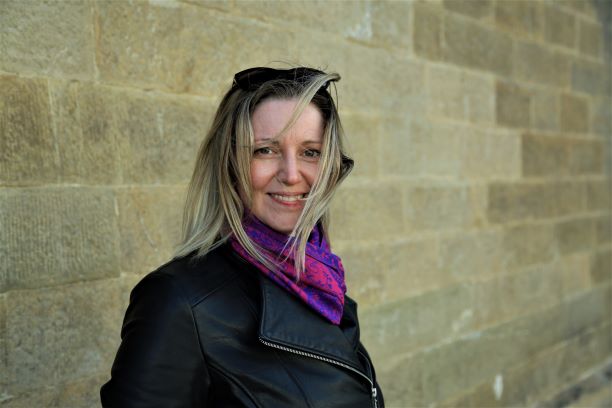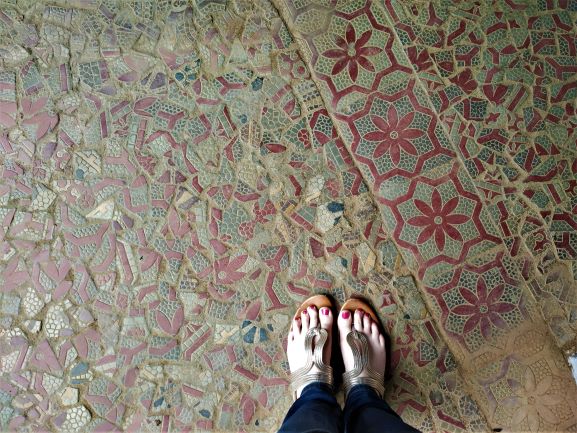Ticking Italy Off The Bucket List
I’ve always had Florence, Italy somewhere near the top of my bucket list. Since I was little girl, I’ve loved pizza and pasta (obsessively so) and in those games where you say ‘if you had to eat one food for the rest of your life, what would it be?’, I’d always answer pasta. It still is my answer, to be honest.
The food in Italy was nothing short of incredible but I felt a little underwhelmed by Florence. Possibly that was because following after Seville was always going to be a hard act to follow. I never really have expectations when I visit a place (usually my entire research into a trip consists of finding the flight and my first night’s accommodation so I don’t have any expectations to meet!) so I can’t even tell you what was missing. Possibly, after years of dreaming about a place, the reality may always leave you a bit lacking.
The Duomo – ‘ Cattedrale di Santa Maria del Fiore‘
There are two super famous things to do in Florence- The Duomo, and the Uffizi Gallery. Due to time constraints, we skipped Uffizi (I’m sure this will HORRIFY some of you) but you can’t miss the Duomo- the city revolves around this grand 150m long building. It started construction in 1296 and was completed in 1436. The dome is the famous bit of the church, as it was an engineering feat at the time and remains to be the largest brick dome ever constructed. Built from pink, green, and white marble, it reflects the fact that this was built during the Italian Renaissance and artists were enjoying a bit more freedom to express themselves. The facade, however, was mocked, with some calling is the ‘cathedral in pyjamas’.
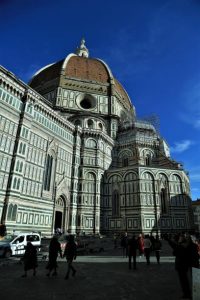

The interior of the Cathedral was vast but fairly minimal. I particularly appreciated the floor, and the interior of the dome. The dome design was by Giorgio Vasari and he got his mate Federico Zuccari to paint it. Leonardo da Vinci was also involved in the exterior of the dome, helping to construct the ball on top of the dome.

I include the next photo because sightseeing, in almost every place we went, involved renovation work- most of the time you just kinda photograph around it. Most places have areas barricaded off, covered in scaffolding, wrapped in plastic. The work is being done sympathetically to the fact that places are major tourist attractions – but be very wary when visiting anything- most travel blogs and Instagrams don’t tell the full truth!

Orsanmichele Church
I struggle a bit with the Cathedral-hopping across Europe and you do tend to be inspired and in awe for the first few, but that rapidly runs out. You stop taking photos of interiors or anything that’s a bit same-same and generally just take it all for granted (I totally recommended reading ‘Pillars of the Earth’ by Ken Follett. MASSIVE book about cathedral building, with technical details- sounds super boring but actually completely amazing book). I find it totally ironic, because I come from New Zealand which has a history of Europeans for about 200 years and I’m seeing these amazing buildings which are older than the white occupation of NZ… (side note- this is why we, as NZ’ers, must treasure our Maori culture, language, and history. Other than that, we would just be an outpost of the UK!)
Orsanmichele Church is a bit different. It was originally a grain warehouse and was converted to a church later. You can clearly see it was an open loggia (like a porch) so that you could back your cart up and inside the building. These open arches were filled in later. You can also see the hooks in the ceiling they used for pulleys, and the chutes in the wall that the grain would come down in.




Boboli Gardens
We cruised around the Boboli Gardens a bit but were underwhelmed. Some dishevelled statues and some closed-off fountains. Some of the statues are quite comical and it’s fun to play the ‘what do you think they are saying’ game, with such winners as ‘‘Looketh at me for whence I have a bunch of grapes and a small penis’. However, the view from the top looking over the Tuscany countryside is beautiful and if you have an afternoon free, it is nice to wander around and enjoy the garden.
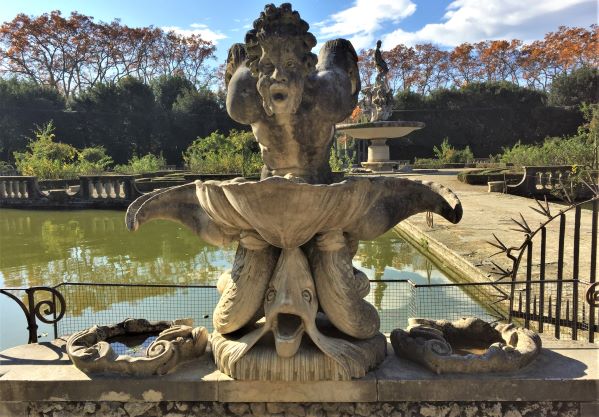

The River Arno
Ponte Vecchio is the famous bridge that crosses the river Arno. The Arno runs through the middle of the city, and has a series of bridges that cross it. Ponte Vecchio is famous (Dan Brown mentions it in one of his books) as it as lined with shops. Originally butchers and other food shops, it’s now largely jewellers. The shops are tiny, and each night the fronts neatly are tidied away with timber shutters that fold down, and up, and sideways. The bridge throngs with tourists and locals going about their daily lives. It usually has a few buskers playing fantastic music, and lots of people just soaking up the history. The statue in the middle and the sides of the bridge are adorned with ‘love locks’. It’s a wonderful place to stop and watch other people.
The river Arno flooded in 1966, killing 101 people and destroying millions of artworks, books, and masterpieces. A tremendous amount of priceless history was destroyed or damaged (the Duomo sustained damage too). Over 1.3 million books or periodicals were destroyed at the library, and a number of artworks were damaged beyond repair. The locals still live with the memory and every time it rains, they wonder…


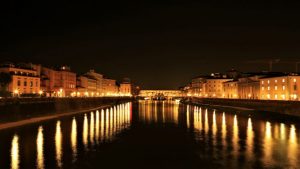
Finally, we visited Piazzale Michelangelo on our final night here. It was bitterly cold and despite gloves, hats, scarves, and boots, I was very cold indeed! Reza was intent on capturing the view though and I think it was worth it. You can see Ponte Vecchio spanning the Arno, and the Duomo on the right hand side. Stunning.

Restaurant Recommendations in Florence
I can recommend two places here that blew my mind.
Trattoria Boboli was delicious, cheap, and warm. Staff were lovely!
Lo Sprone is this tiny little place, away from tourist central. Food was amazing. We had the classic cacio e pepe (FAVOURITE) and sage and nut ravioli. And tiramisu, of course.
